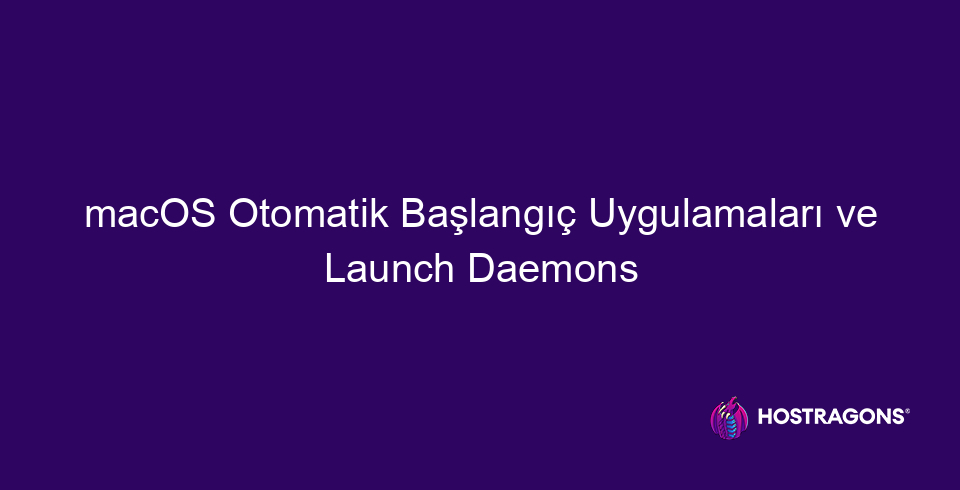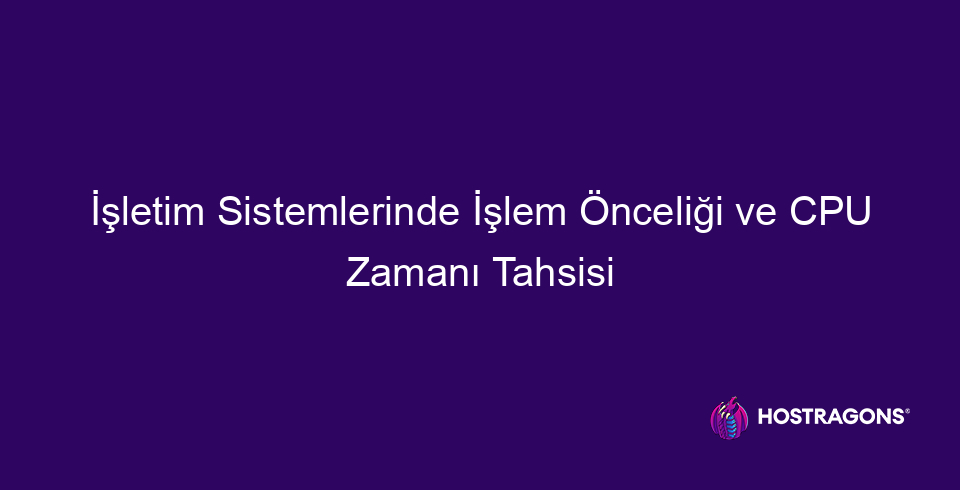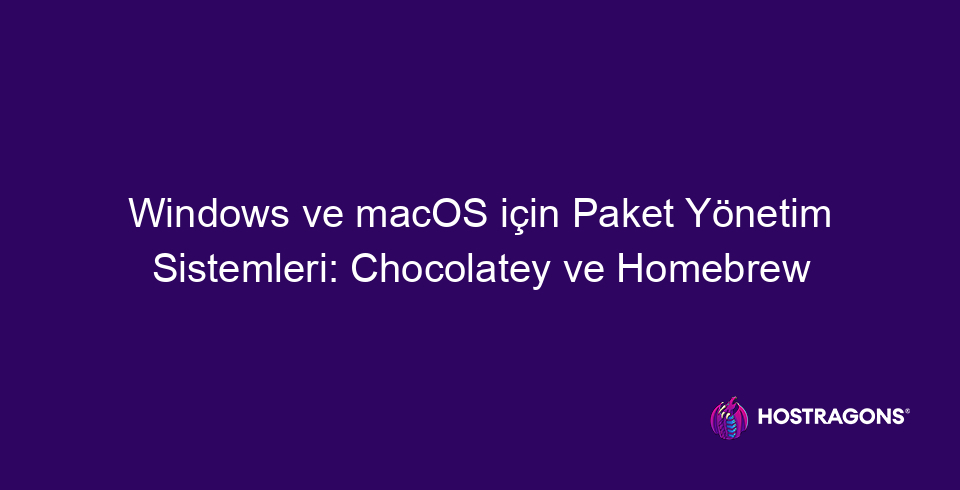Free 1-Year Domain Offer with WordPress GO Service
This category contains information about various operating systems used on web servers and personal computers. It contains detailed content about the features, installations, updates and optimizations of popular operating systems such as Windows, Linux, macOS.

macOS Automatic Startup Applications and Launch Daemons
macOS Automatic startup applications are critical for improving performance and optimizing workflow on macOS. This blog post takes a detailed look at what automatic startup applications are on macOS, how to set them up, and how they relate to ‘launch daemons’. It offers ways to optimize startup processes, fix potential issues, and use apps efficiently. It also helps users improve their macOS experience by providing recommendations for best startup applications and future trends. It offers practical tips to bypass restrictions and speed up startup processes. What are macOS Automatic Startup Applications? macOS automatic startup applications are programs that run automatically when your computer is turned on or restarted. These applications include system services, utilities,...
Continue reading

Operating Systems Running on ARM Architecture: Current Status and Future
Operating systems in ARM architecture play a critical role in a wide range of applications today, from mobile devices to embedded systems. This blog post examines the importance of operating systems in ARM architecture, popular examples, and the advantages they offer in detail. While key advantages such as energy efficiency and cost effectiveness are discussed, the increasing role of ARM operating systems in the future is emphasized. Technological developments, areas of use, security issues, and common errors and solutions are also evaluated, and best practice recommendations are presented in ARM architecture. As a result, important information and recommendations are provided regarding the future potential of operating systems in ARM architecture. What is the Importance of Operating Systems in ARM Architecture? ARM architecture is today used in a wide range of applications from mobile devices to embedded systems, even server...
Continue reading

Process Priority and CPU Time Allocation in Operating Systems
In operating systems, process priority plays a critical role in ensuring efficient use of system resources and optimizing application performance. In this blog post, we examine the importance of process priority in operating systems, what CPU time allocation means, and the different types of process priority. We also cover the impact of process priority on CPU performance, process priority management in time sharing, and key performance indicators (KPIs). We compare different process priority algorithms and present best practices for process management. Finally, we summarize our learnings by highlighting time allocation errors in operating systems and provide tips for implementation. This will help system administrators and developers improve system performance by managing process priority more effectively....
Continue reading

Using LVM (Logical Volume Management) in Linux Operating System
This blog post covers the use of LVM (Logical Volume Management) in detail for Linux operating system users. It explains in detail what LVM is, why it is used, and the advantages it offers, as well as the installation steps and management tools. Disk space management, enlargement and reduction processes with LVM are explained step by step, while attention is drawn to performance and security issues. The post also highlights important points to consider when using LVM, and offers practical information with application suggestions. It is a valuable resource for Linux system administrators and those interested in learning and using LVM effectively. What is a Linux Operating System? The Linux operating system is an open source, free and...
Continue reading

Advanced Security in Linux Distributions SELinux and AppArmor
Providing advanced security in Linux distributions is critical to protecting systems. This blog post takes an in-depth look at two important security tools, SELinux and AppArmor. It explains what SELinux is, its basic features, and how it functions, while highlighting the advantages AppArmor offers as an alternative security tool to SELinux. The differences between the two tools are presented comparatively, and guidance is provided on which security strategies should be followed in Linux distributions. Practical tips on using SELinux and AppArmor are provided, while the importance of complementary measures such as firewalls and user permissions is also emphasized. Finally, the steps to be taken to create a more secure environment in Linux distributions are summarized, and guidance is provided for subsequent security procedures. This...
Continue reading

Operating Systems Security Hardening Guide
This blog post highlights the critical importance of operating system security and offers ways to protect against cyber threats. It provides information on a wide range of topics, from basic security principles to security vulnerabilities and solutions. While examining security hardening tools, software, and standards, the importance of operating system updates and data encryption is emphasized. Network security, control mechanisms, user education, and awareness-raising are discussed, and the steps to creating an effective security strategy are explained. This comprehensive guide contains valuable tips for anyone who wants to make their operating systems more secure. The Importance of Operating System Security In today's digital world, operating systems form the foundation of computer systems and networks. Operating systems manage hardware resources,...
Continue reading

Hardening Operating Systems: Hardening Against Cyber Attacks
Hardening of operating systems is a critical process for increasing the security of systems against cyberattacks. It involves closing vulnerabilities in ‘Operating Systems’, disabling unnecessary services, and tightening authorization controls. Hardening helps prevent data breaches, ransomware attacks, and other malicious activities. This process includes steps such as regularly updating the operating system, using strong passwords, enabling firewalls, and using monitoring tools. There are specific hardening methods for different operating systems, and successful strategies are based on risk assessment and continuous monitoring. It is important to avoid common mistakes such as misconfigurations and outdated software. Effective hardening increases the resilience of systems, thus reducing cyberattacks...
Continue reading

Package Management Systems for Windows and macOS: Chocolatey and Homebrew
This blog post takes a detailed look at package management systems for Windows and macOS operating systems. The post explains what package management systems are and why they are used, and focuses specifically on Chocolatey and Homebrew. It provides information on what Chocolatey and Homebrew are, basic steps to use, and feature comparisons. It also covers things to consider in package management, the future of these systems, and factors to consider when making a choice. The post aims to help readers decide which package management system is best for their needs. What are Package Management Systems? Package management systems are tools that make it easy to install, update, configure, and remove software and applications on your computer. Traditional methods...
Continue reading

Operating System Migration: Guide to Migrating from Windows to Linux or macOS
This blog post provides a comprehensive guide to those looking to migrate from Windows to Linux or macOS by covering operating system migration in detail. It explains what an operating system is and why it is important, highlighting the key differences between Linux and macOS. It examines preparation before the migration, the installation process, potential challenges, and the steps to follow in detail. It also presents the advantages of using both systems, applications that improve user experience, and a post-migration checklist. Finally, it emphasizes the strategic importance of operating system migration, drawing attention to why this process is important for businesses and individuals. Introduction to Operating Systems: What is it and Why is it Important? The operating system is the interface between a computer's hardware and the user...
Continue reading

Advanced Disk Management and Storage Spaces in Windows
This blog post takes a deep dive into advanced disk management and Storage Spaces features in Windows. What advanced disk management is, its benefits, the definition of Storage Spaces, and its areas of use are explained in detail. Advanced disk management with Storage Spaces, its relationship with backups, and practical tips for successful disk management are presented. In addition, common errors and solutions to disk management, necessary tools, and future trends are discussed. As a result, it aims to help readers optimize disk management in Windows operating systems with implementation steps. If you are ready, let's get started! html What is Advanced Disk Management in Windows? Advanced disk management in Windows goes beyond standard disk management tools and uses storage spaces more efficiently...
Continue reading

